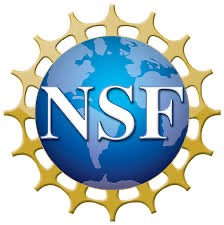Wireless mobile broadband is a key driver for innovation and economic growth. Sustaining this growth is challenging and requires both technological and regulatory innovations that increase the wireless spectrum utilization, in order to be able to accommodate more data traffic within the finite spectrum resource. The exponential increase in traffic demand is expected to continue with the deployment of 5G networks and beyond, hence placing additional challenges that need innovative solutions. Despite more than a decade of intense research activity on dynamic spectrum sharing, there are still fundamental open questions regarding spectrum policies and their impact on spectrum utilization. This project helps meet these challenges, by providing tools and mathematical foundations that enable regulators, and the research community, to understand and design efficient spectrum sharing policies leading to wireless broadband networks that are more capable of carrying more traffic than what is envisioned today.
Intellectual Mertirs: The intellectual merit of this proposal is that it develops a stochastic modeling and optimization approach to study the techno-economic aspects of spectrum licensing policies, with a focus on layered/tiered licensing architectures. In this approach, the revenue processes and customer demands are modeled as stochastic processes. A regulator is modeled as an entity that attempts to set spectrum policies that maximize spectrum utilization given various levels of knowledge, or lack thereof, of the stochastic and complex dynamics of the market. This sets up a stochastic optimization framework that makes it possible to compare different spectrum regulatory policies as a function of the market. In addition, it also characterizes the optimal values of the parameters of the spectrum policies that achieve the optimal (maximum) spectrum utilization for a given market. It also provides real-time randomized algorithms for operators to optimize their spectrum portfolios without prior knowledge of the market/spectrum dynamics. Thus this framework captures both regulator and operator perspectives. The research provides tools to enable regulators, and the research community, to explore "what-if" licensing policies, which is currently not possible except through primarily qualitative and subjective case/empirical studies. The plan includes extensive validations and comparisons against publicly available data sets and simulations.
Broader Impacts: The broader impacts of the work include the design of new education courses and material that prepare the next generation of the workforce to design and operate such high-performance networks. It also includes activities to reach-out to K-12 students and increase the number and diversity of US citizens in science and engineering, which is essential for sustained economic growth and prosperity.
Award info: NSF CNS NeTS: Small, grant #2007454; start date: October 1, 2020; end date (estimated): September 30, 2023.
